Photo essay: Inside Canada’s Prairie prisons
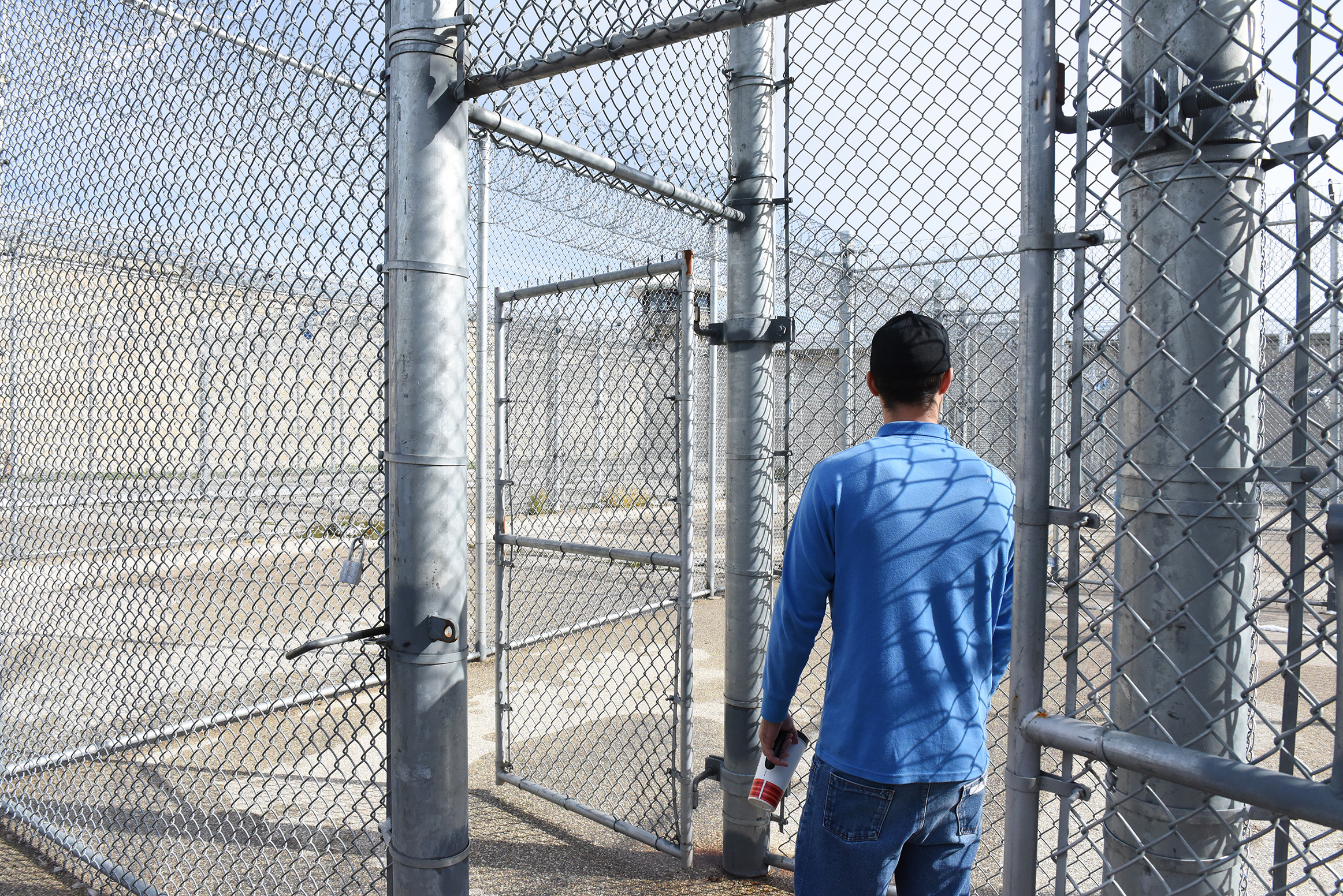
Members of the Senate Committee on Human Rights conducted a fact-finding mission to Canada’s Prairie penitentiaries and held a public hearing as part of their study on the human rights of federal prisoners. This photo essay offers a rare glimpse inside Canada’s federal correctional facilities.
Saskatchewan PenitentiaryPrince Albert, Sask.
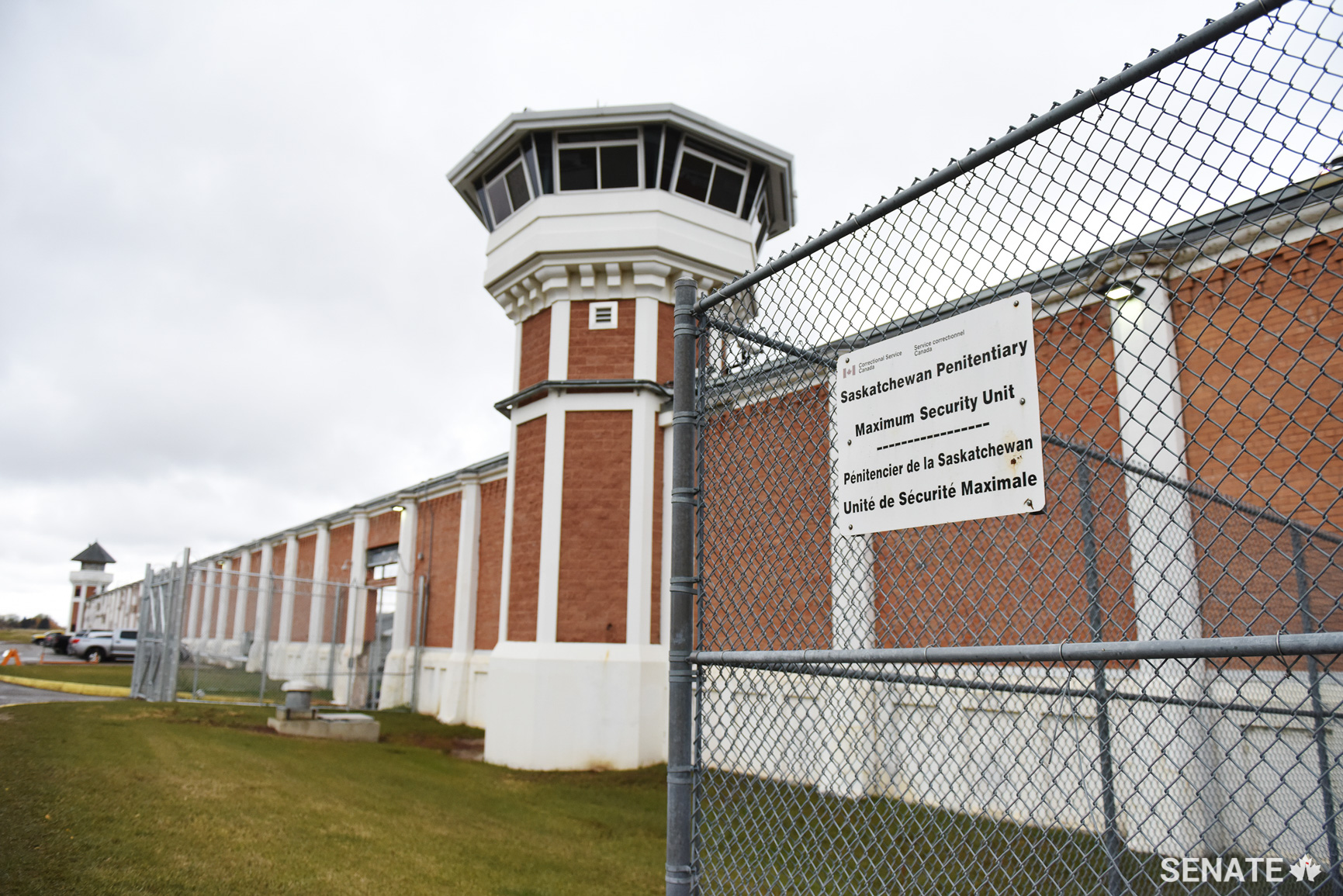 A watchtower looms over the perimeter of the Saskatchewan Penitentiary’s maximum security unit.
A watchtower looms over the perimeter of the Saskatchewan Penitentiary’s maximum security unit.
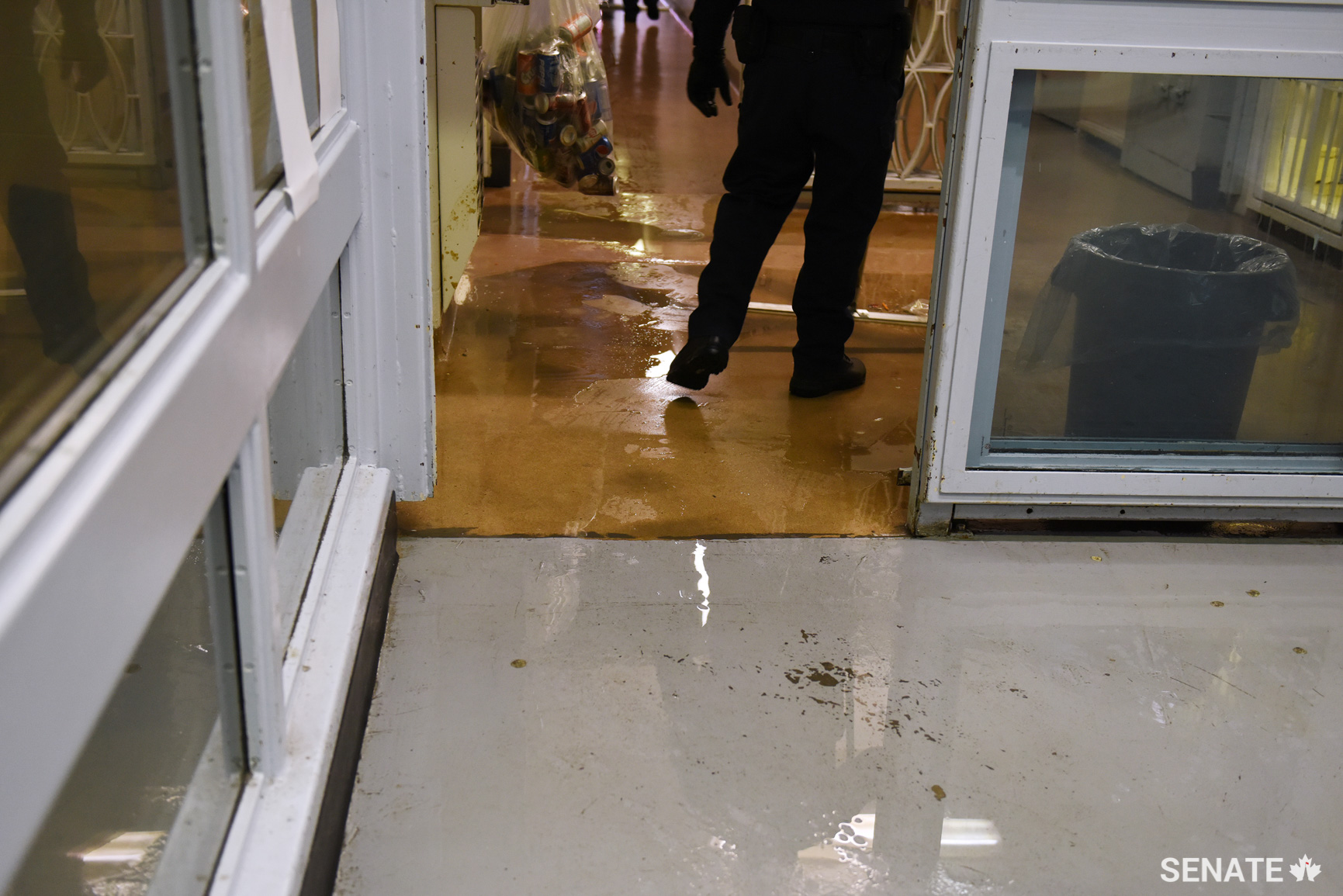 A correctional worker cleans up flooding caused by a broken sprinkler head in a prisoner’s segregation cell. Prisoners sometimes resort to vandalism to protest conditions that they consider unfair.
A correctional worker cleans up flooding caused by a broken sprinkler head in a prisoner’s segregation cell. Prisoners sometimes resort to vandalism to protest conditions that they consider unfair.
Prince Albert Grand Council Spiritual Healing LodgePrince Albert, Sask.
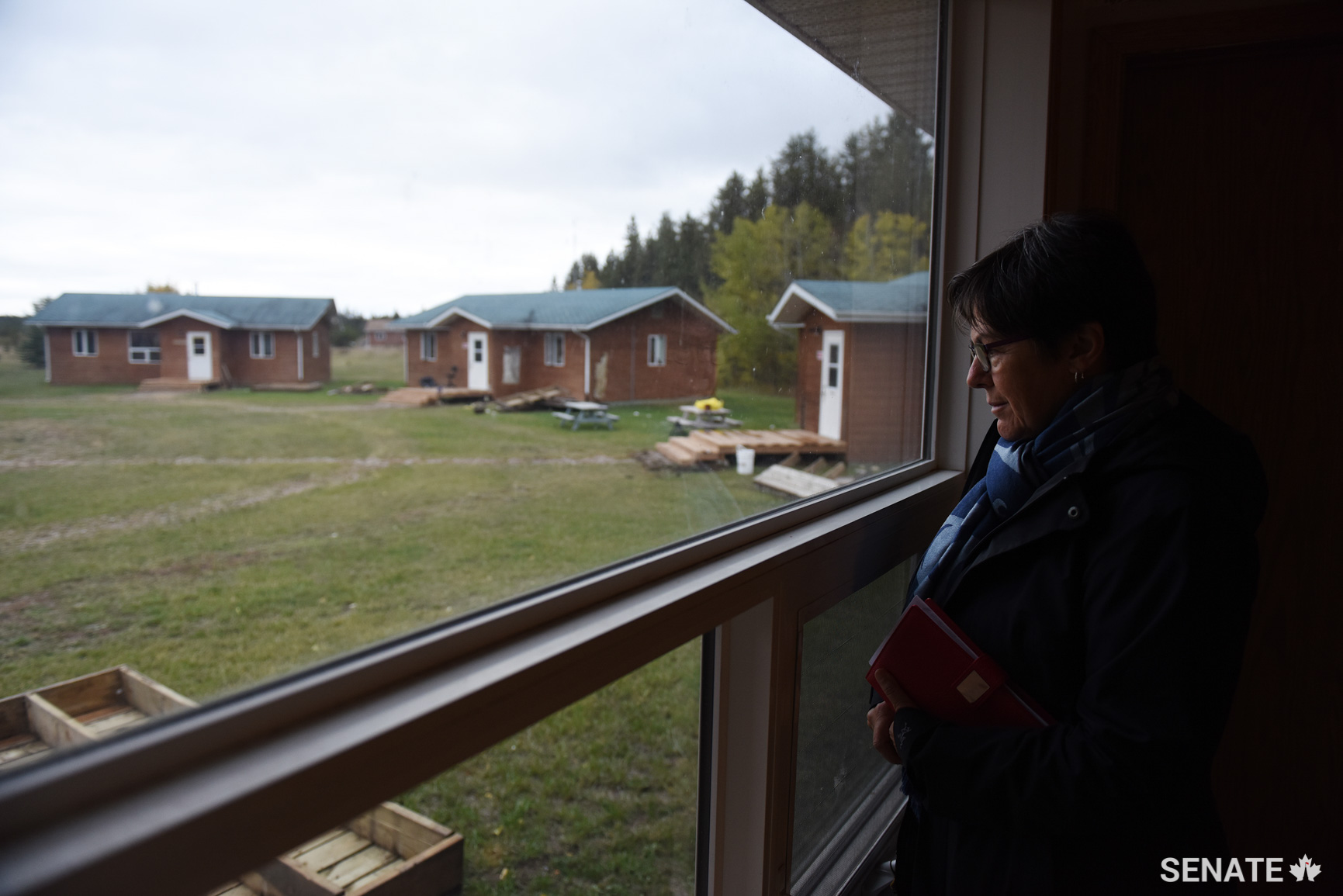 Senator Kim Pate looks out onto the grounds of the Prince Albert Grand Council Spiritual Healing Lodge, which includes six cabins, summer and winter sweat lodges, a room dedicated for healing circles, and an administration room. Prisoners at the healing lodge are referred to as “relatives” by staff.
Senator Kim Pate looks out onto the grounds of the Prince Albert Grand Council Spiritual Healing Lodge, which includes six cabins, summer and winter sweat lodges, a room dedicated for healing circles, and an administration room. Prisoners at the healing lodge are referred to as “relatives” by staff.
Okimaw Ohci Healing LodgeMaple Creek, Sask.
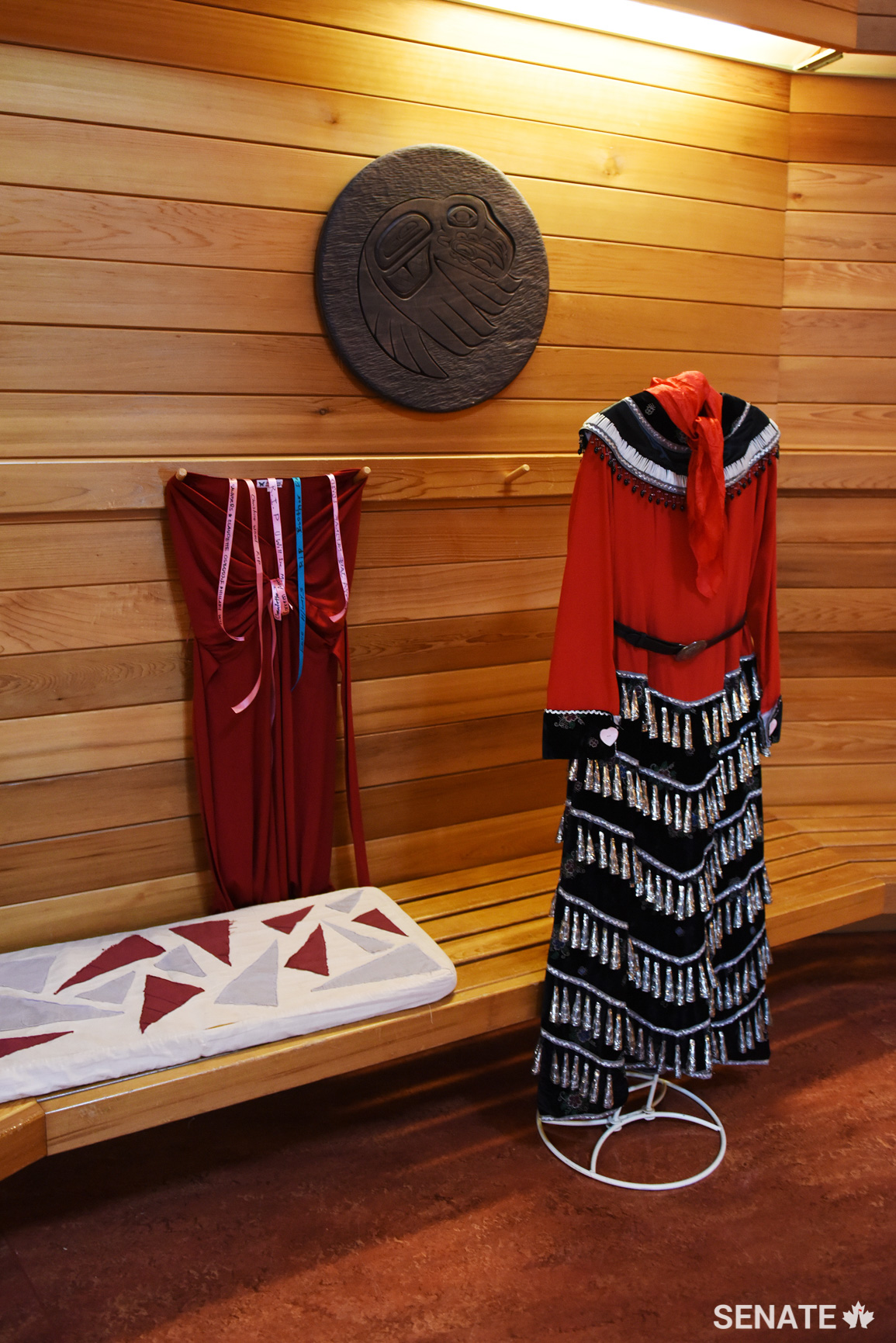 To commemorate their missing and murdered family and friends, women add ribbons with the names of their loved ones to a red dress, displayed here next to a ceremonial jingle dress.
To commemorate their missing and murdered family and friends, women add ribbons with the names of their loved ones to a red dress, displayed here next to a ceremonial jingle dress.
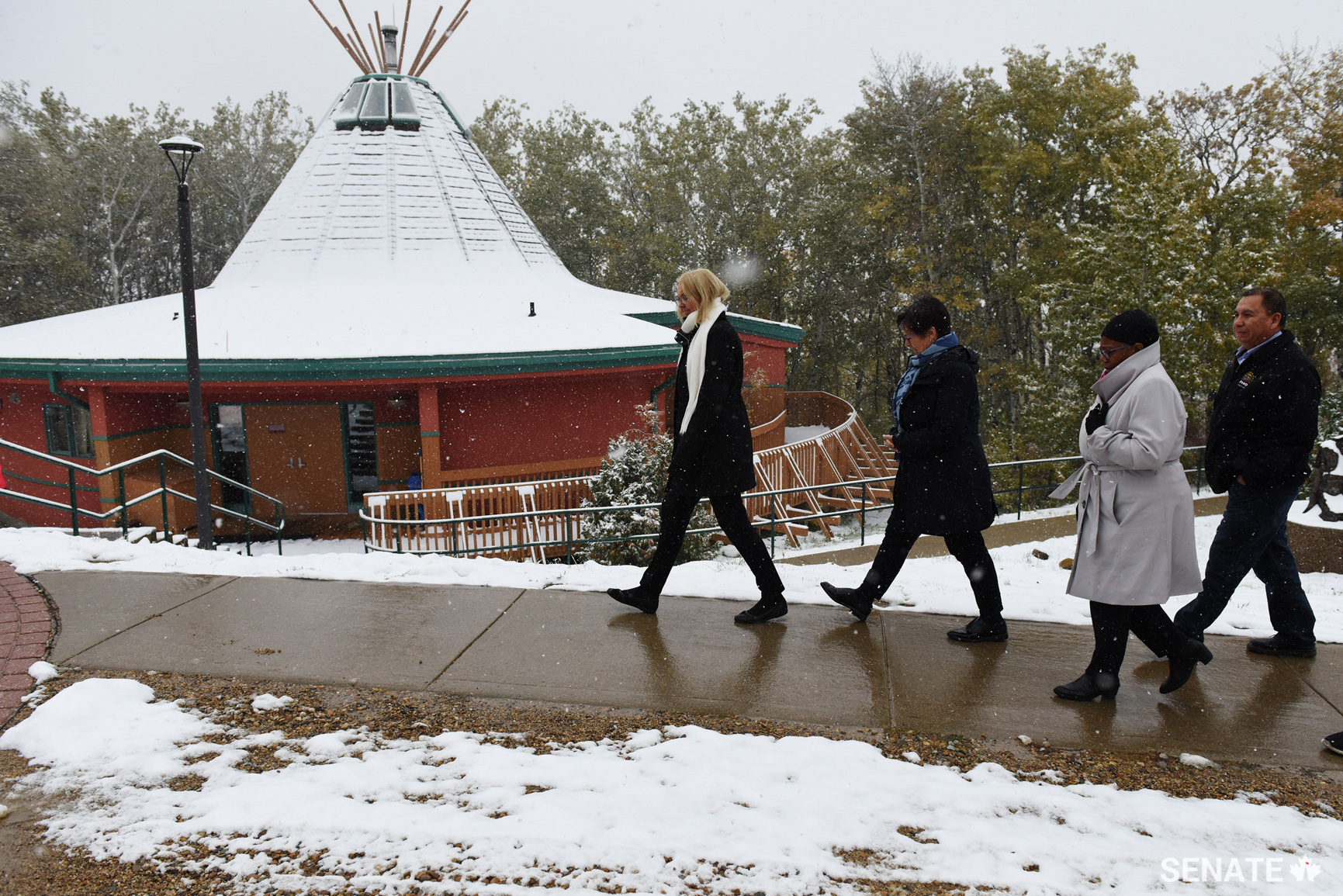 Senator Jane Cordy, Senator Kim Pate, Senator Wanda Thomas Bernard and Chief Alvin Francis walk past a spiritual lodge at the Okimaw Ohci Healing Lodge. Located on lands belonging to the Nekaneet First Nation, it was designed to house minimum, medium and maximum-security prisoners.
Senator Jane Cordy, Senator Kim Pate, Senator Wanda Thomas Bernard and Chief Alvin Francis walk past a spiritual lodge at the Okimaw Ohci Healing Lodge. Located on lands belonging to the Nekaneet First Nation, it was designed to house minimum, medium and maximum-security prisoners.
Regional Psychiatric CentreSaskatoon, Sask.
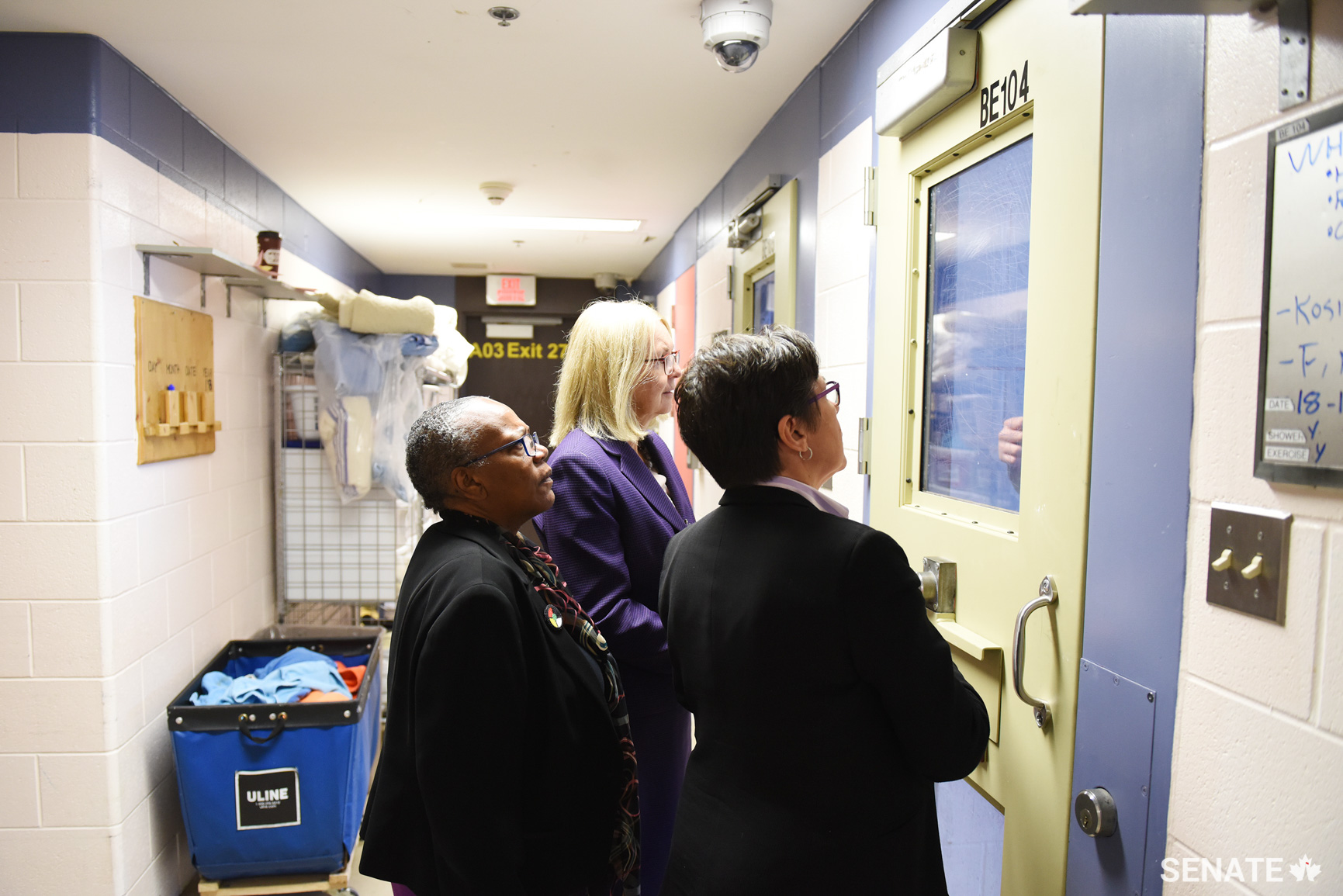 Senators Bernard, Cordy and Pate speak to a prisoner through a window in a segregation cell.
Senators Bernard, Cordy and Pate speak to a prisoner through a window in a segregation cell.
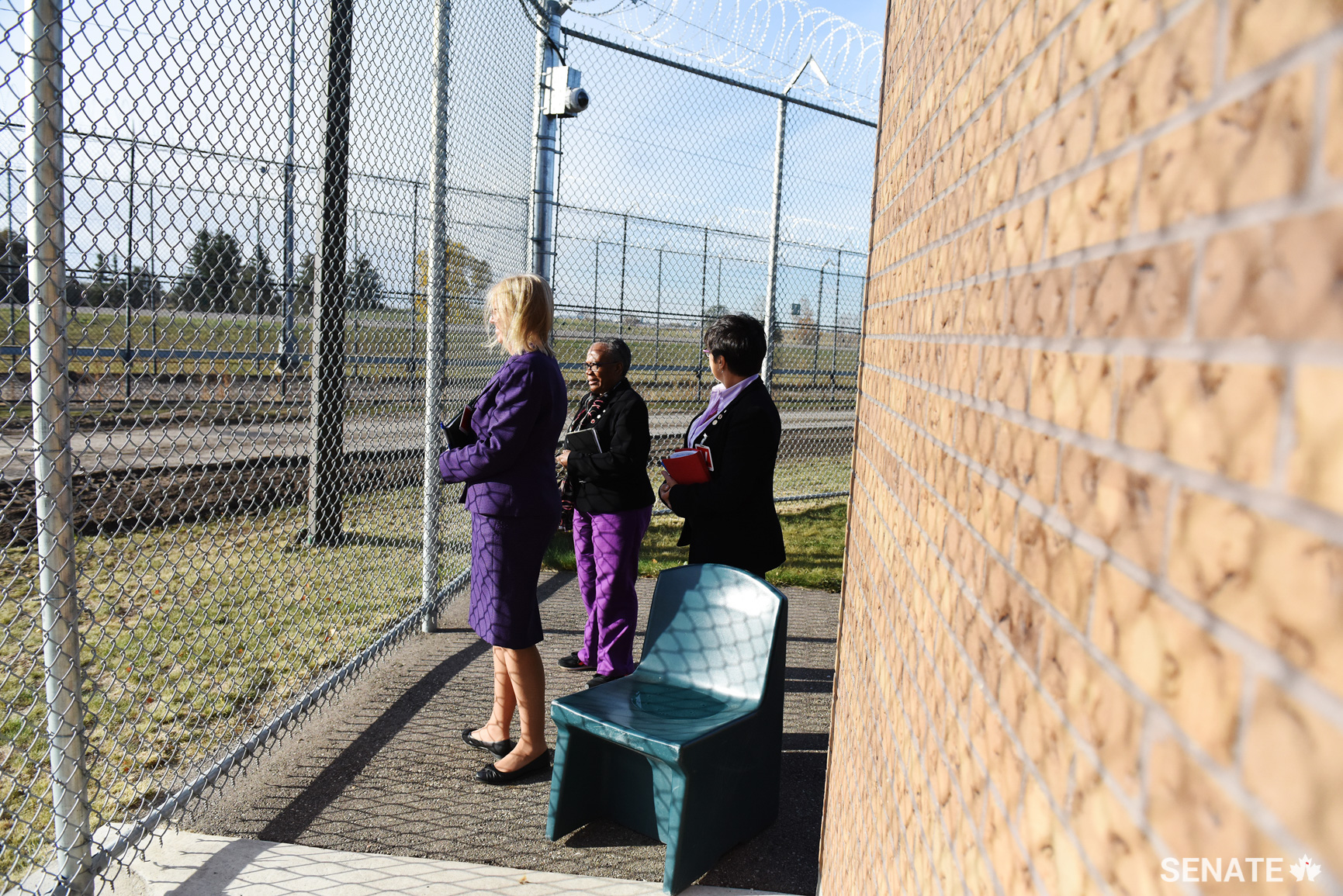 Layers upon layers of chain-link fence surround an outdoor recreation area at Saskatoon’s Regional Psychiatric Centre, designated both a provincial psychiatric hospital and a federal penitentiary.
Layers upon layers of chain-link fence surround an outdoor recreation area at Saskatoon’s Regional Psychiatric Centre, designated both a provincial psychiatric hospital and a federal penitentiary.
Public Hearings and Town Hall
Ma Mawi Wi Chi Itata Centre
Winnipeg, Man.
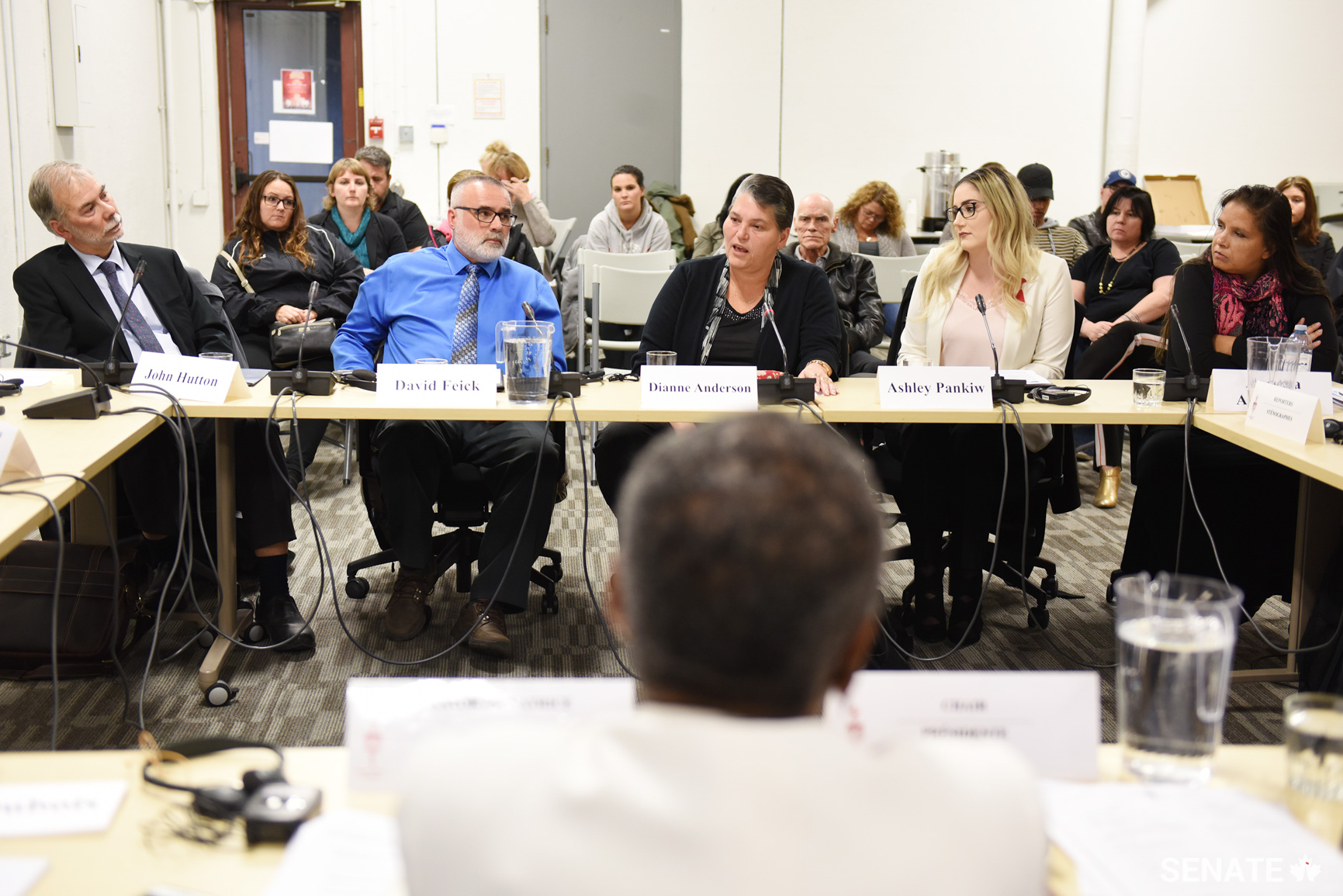 The committee heard testimony from witnesses in three rounds of panels and held a town hall-style meeting during a public hearing at the Ma Mawi Wi Chi Itata Centre event hall in Winnipeg.
The committee heard testimony from witnesses in three rounds of panels and held a town hall-style meeting during a public hearing at the Ma Mawi Wi Chi Itata Centre event hall in Winnipeg.
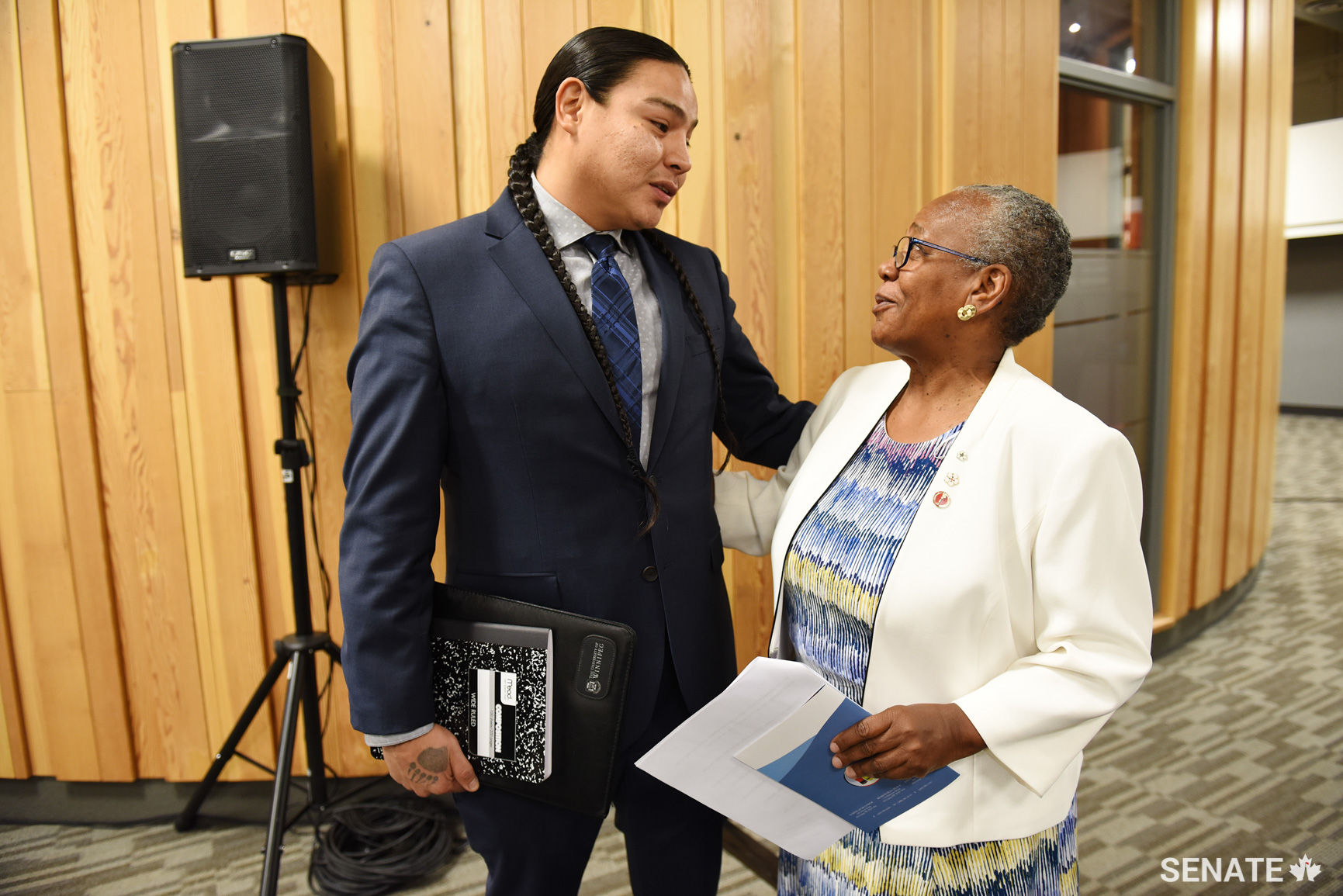 Panellist Ryan Beardy and Senator Bernard greet each other before a public hearing. Mr. Beardy was sent to a youth detention centre at age 13 and spent years in and out of the criminal justice system. He is now in his 30s and in his second year at the University of Winnipeg studying political science and conflict resolution.
Panellist Ryan Beardy and Senator Bernard greet each other before a public hearing. Mr. Beardy was sent to a youth detention centre at age 13 and spent years in and out of the criminal justice system. He is now in his 30s and in his second year at the University of Winnipeg studying political science and conflict resolution.
Stony Mountain InstitutionStony Mountain, Man.
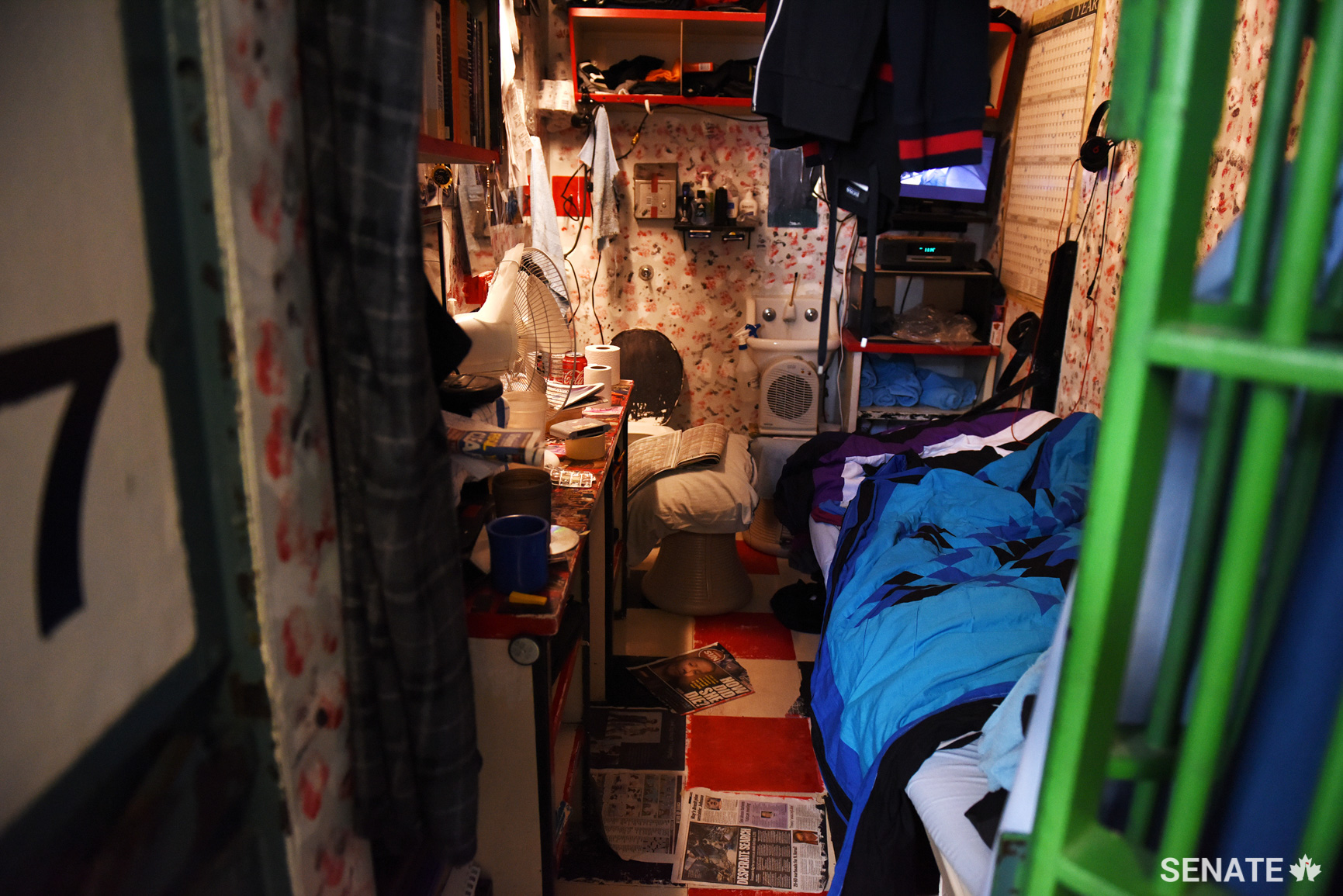 A prisoner on what’s known as the lifer range decorated his Stony Mountain Institution cell to make it feel more like home. “Even a dog gets a bone if he behaves,” he told senators. “I don’t think I’ll ever get out but not through lack of trying.”
A prisoner on what’s known as the lifer range decorated his Stony Mountain Institution cell to make it feel more like home. “Even a dog gets a bone if he behaves,” he told senators. “I don’t think I’ll ever get out but not through lack of trying.”
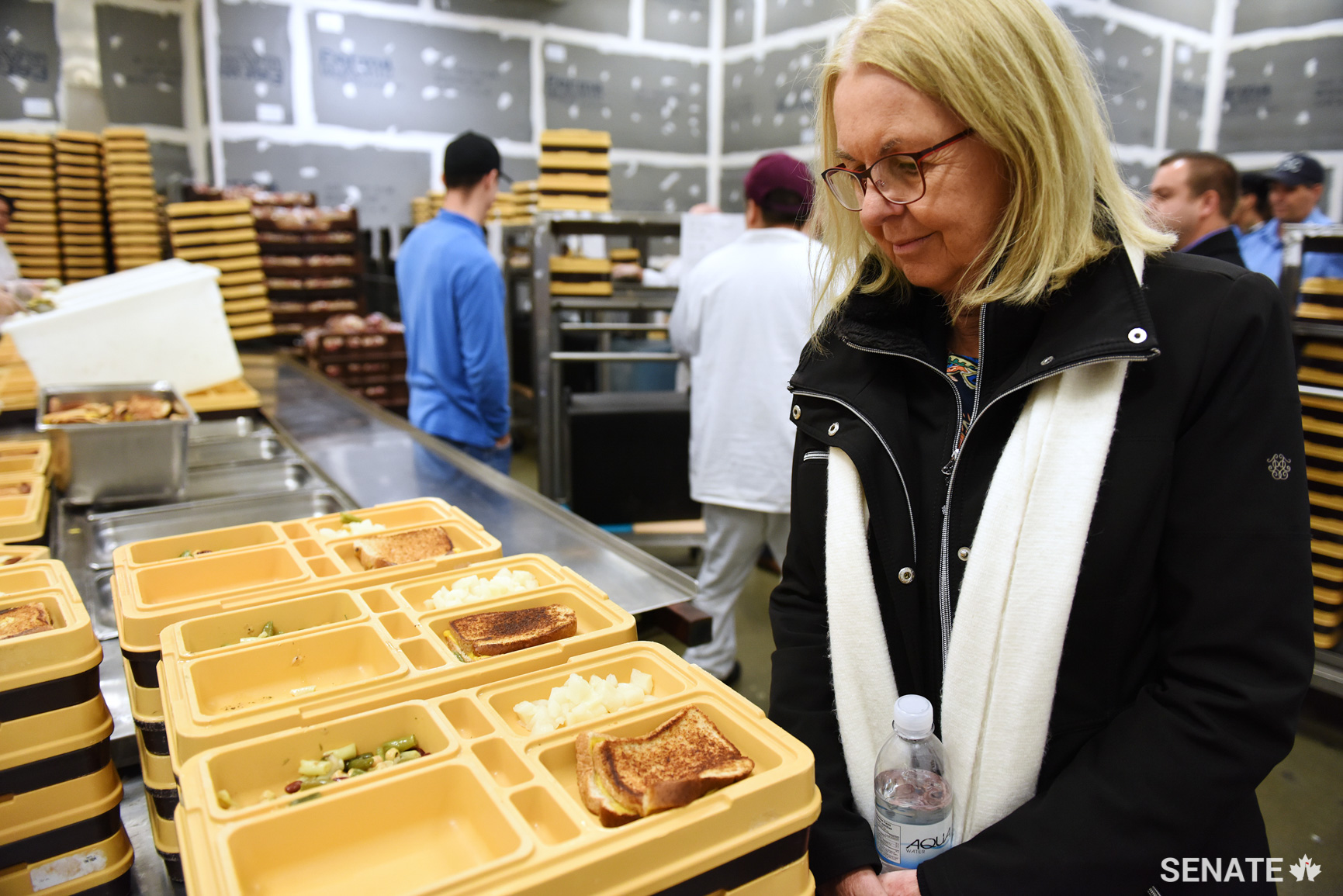 Senator Cordy inspects the day’s lunch offering: grilled cheese, salad and pears. Small portion size is a regular complaint at the prison, members of the prisoners’ committee told senators.
Senator Cordy inspects the day’s lunch offering: grilled cheese, salad and pears. Small portion size is a regular complaint at the prison, members of the prisoners’ committee told senators.
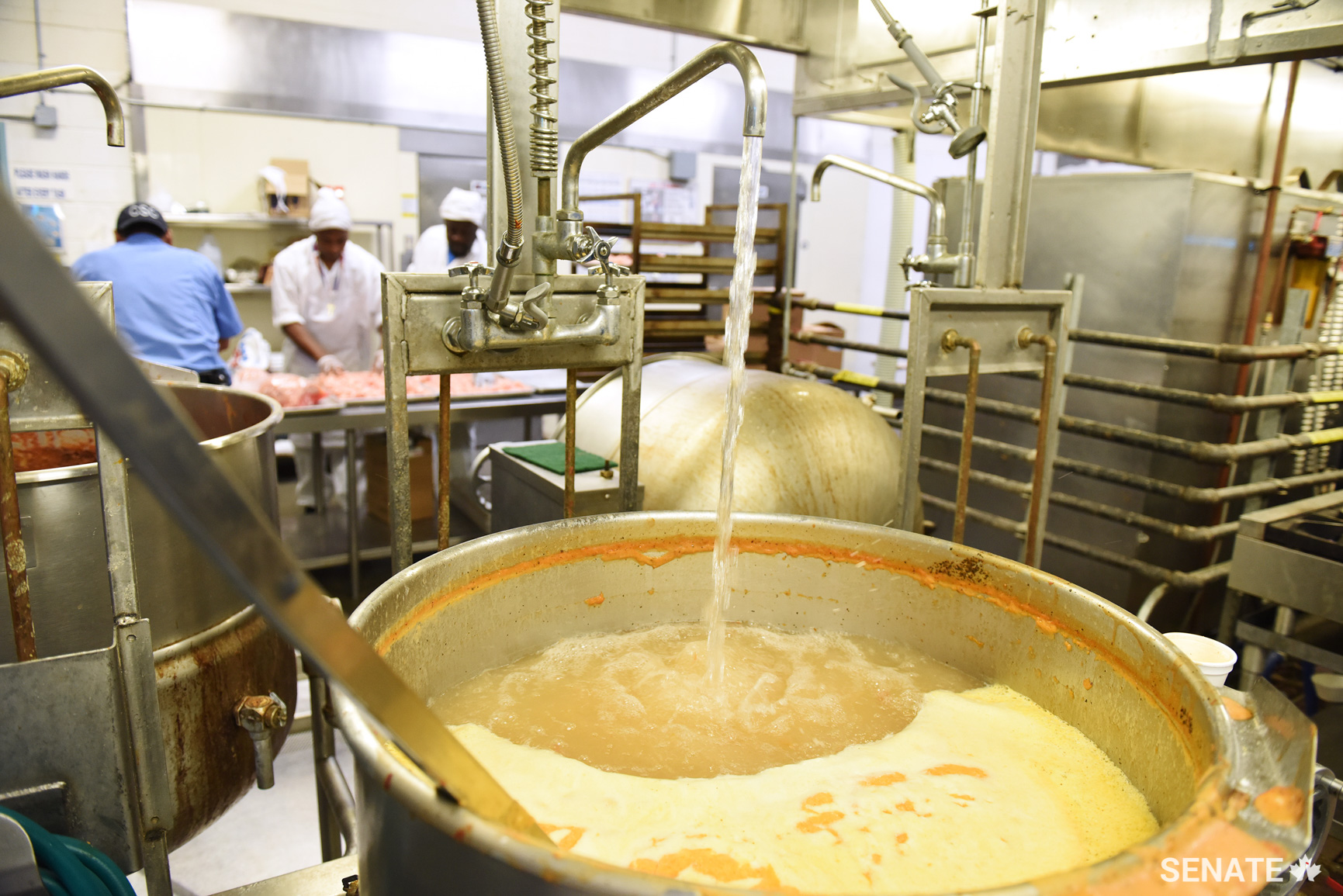 A tap flows into a large soup pot. A prisoner said one of the cooks used to wash his hands under the tap as it poured into the soup.
A tap flows into a large soup pot. A prisoner said one of the cooks used to wash his hands under the tap as it poured into the soup.
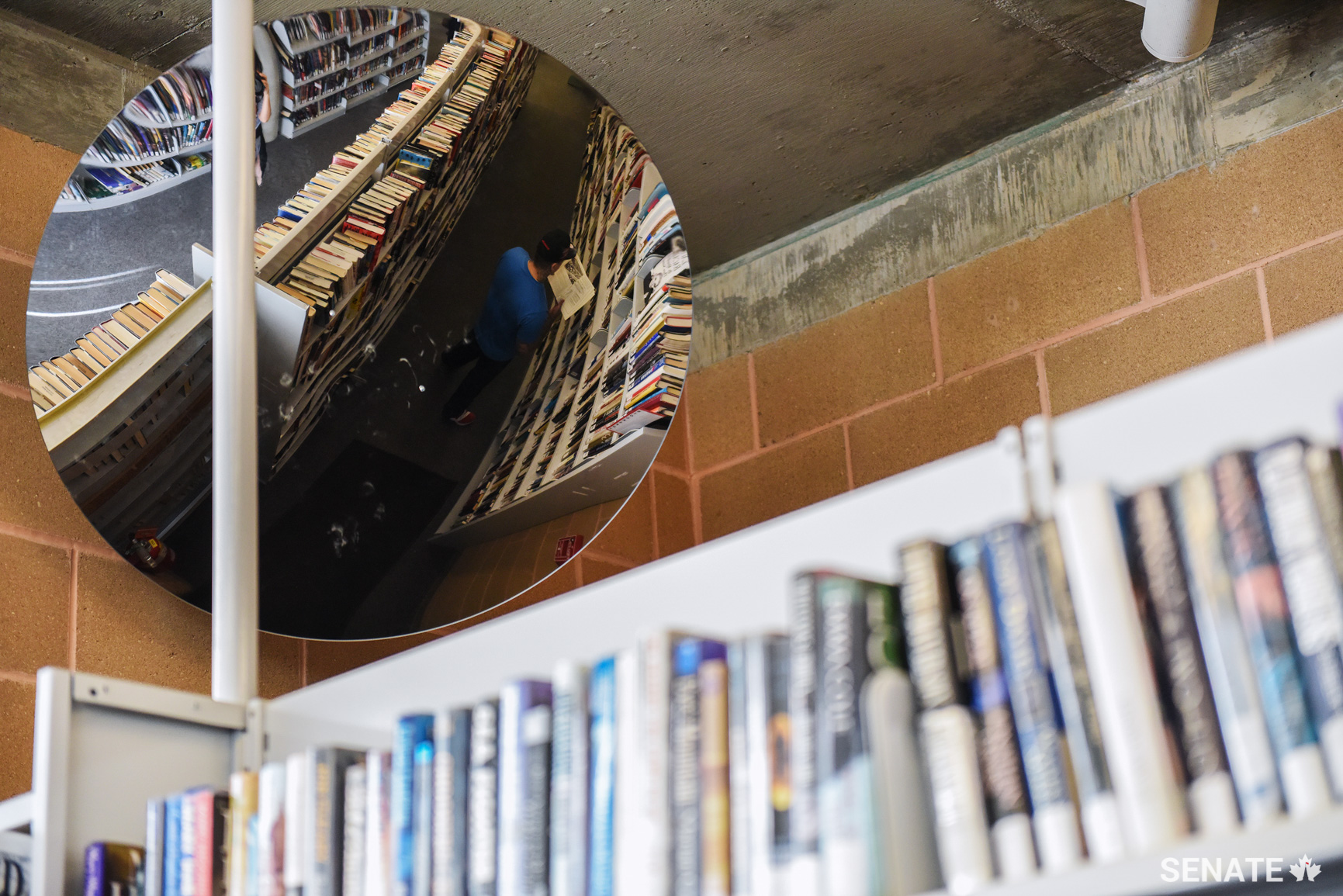 A prisoner browses in the Stony Mountain library.
A prisoner browses in the Stony Mountain library.
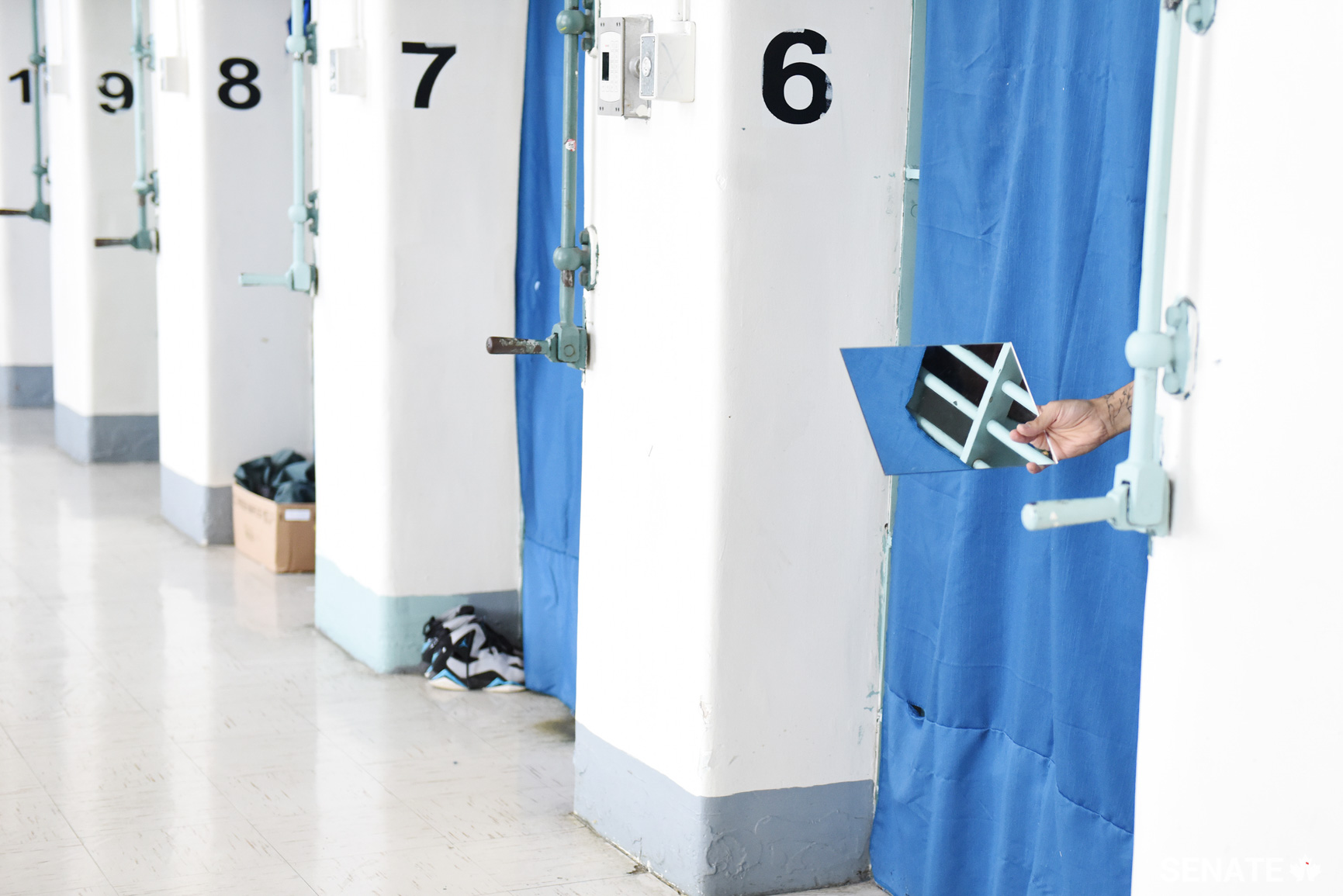 A prisoner extends a mirror beyond his cell bars to see what senators are doing on the range.
A prisoner extends a mirror beyond his cell bars to see what senators are doing on the range.
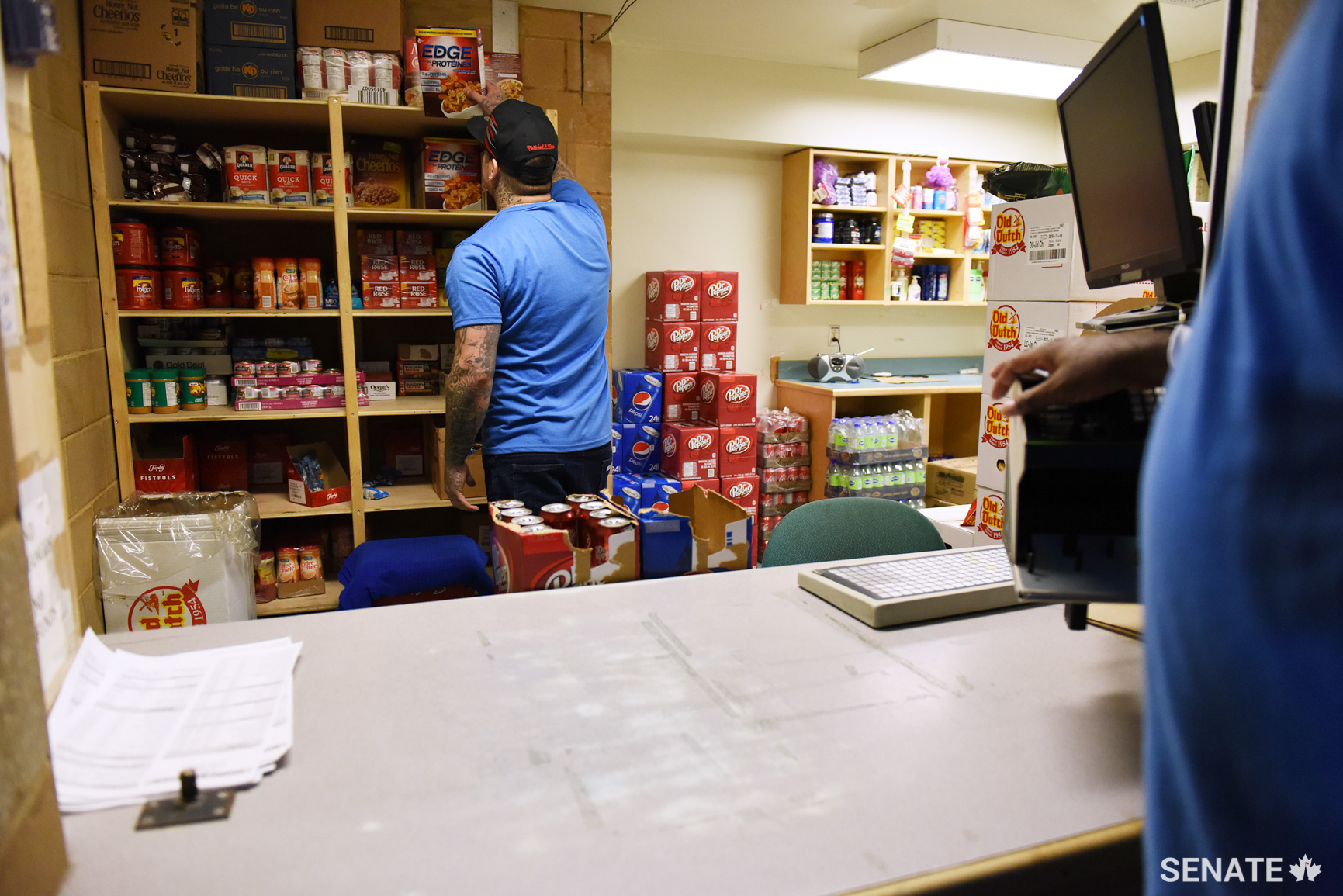 Prisoners in the canteen area use a hand scanner to pay for items they wish to purchase.
Prisoners in the canteen area use a hand scanner to pay for items they wish to purchase.
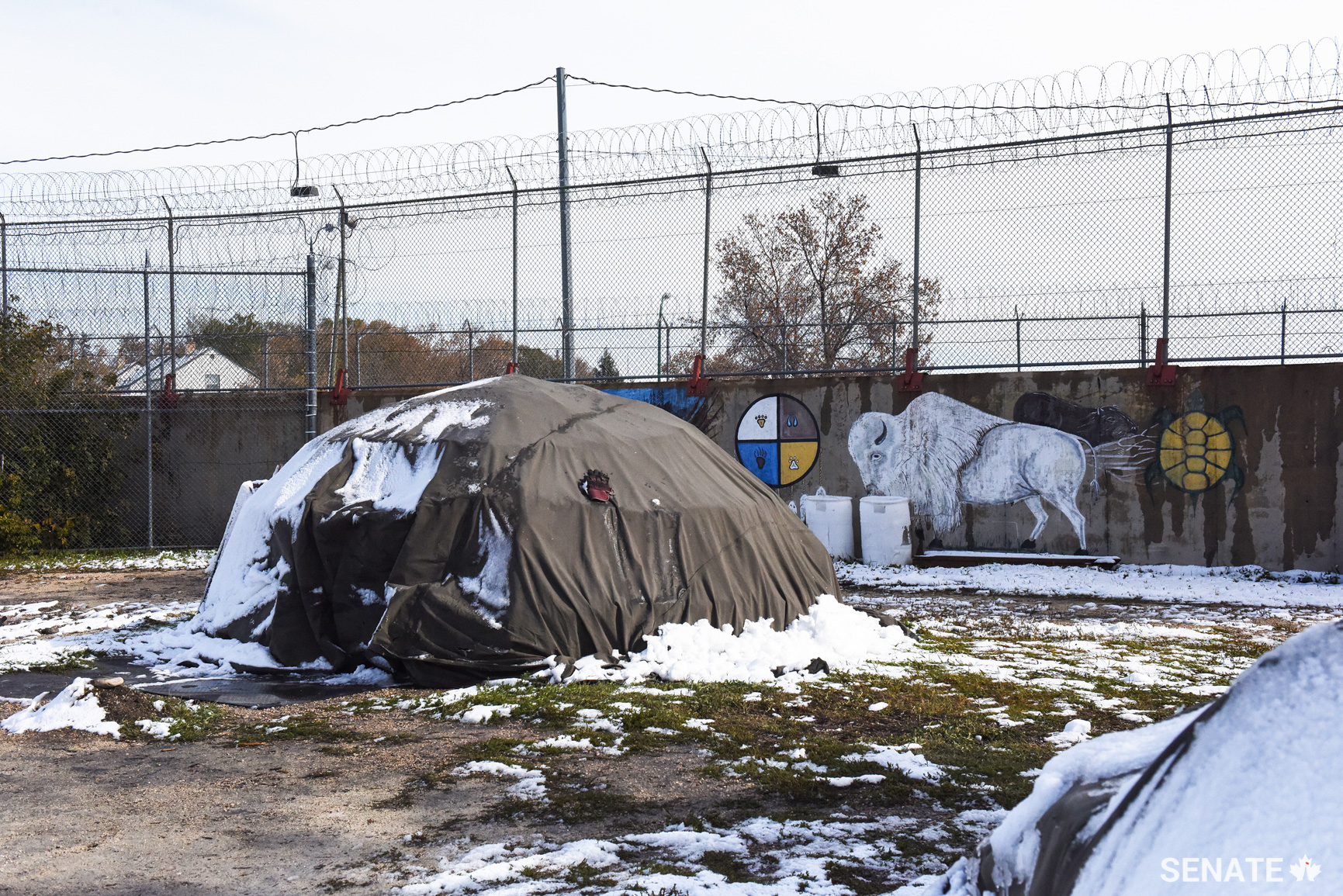 Prisoners’ paintings surround a sweat lodge in the spiritual grounds at Stony Mountain.
Prisoners’ paintings surround a sweat lodge in the spiritual grounds at Stony Mountain.
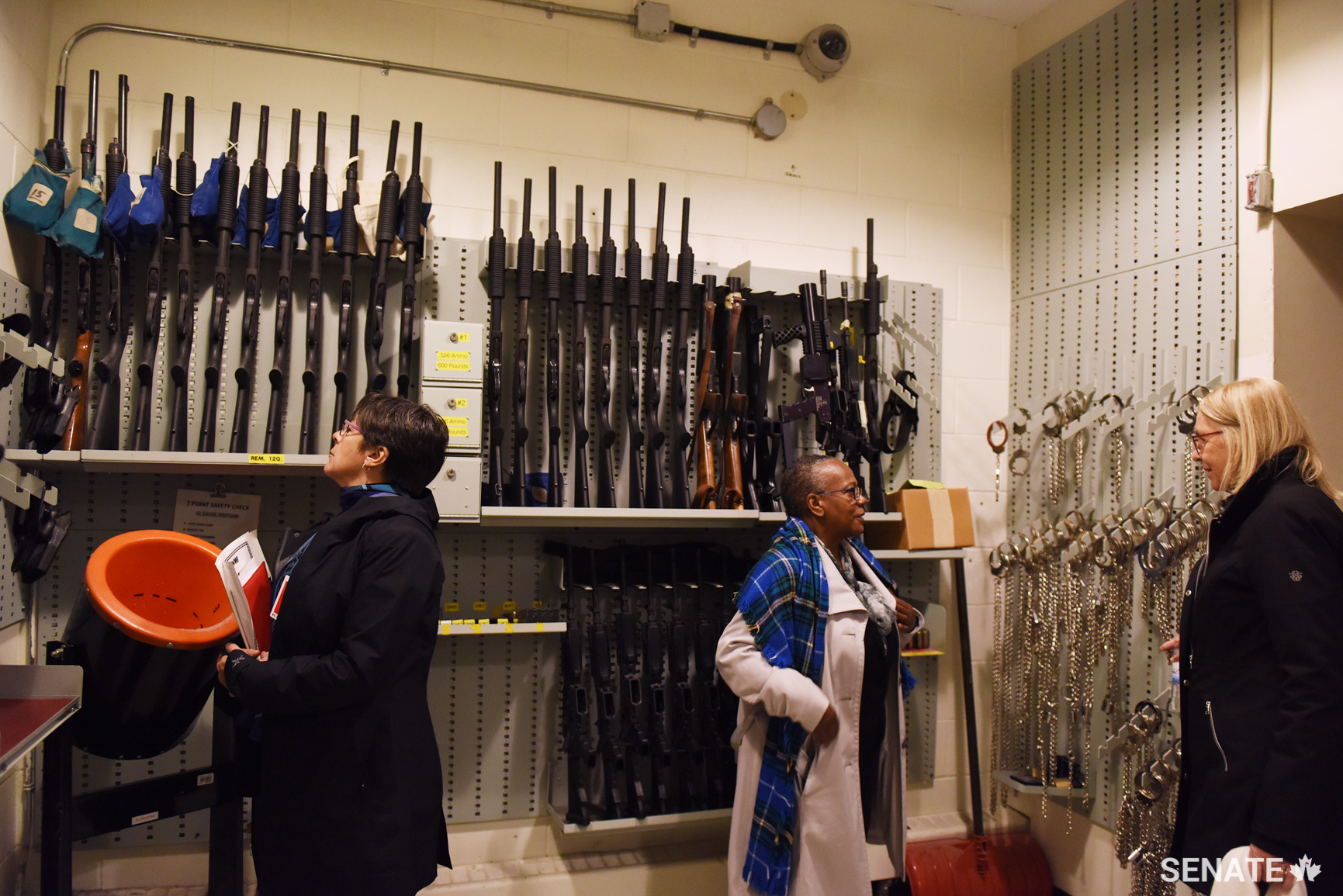 The prison armory includes rifles, shackles, leg irons and handcuffs.
The prison armory includes rifles, shackles, leg irons and handcuffs.
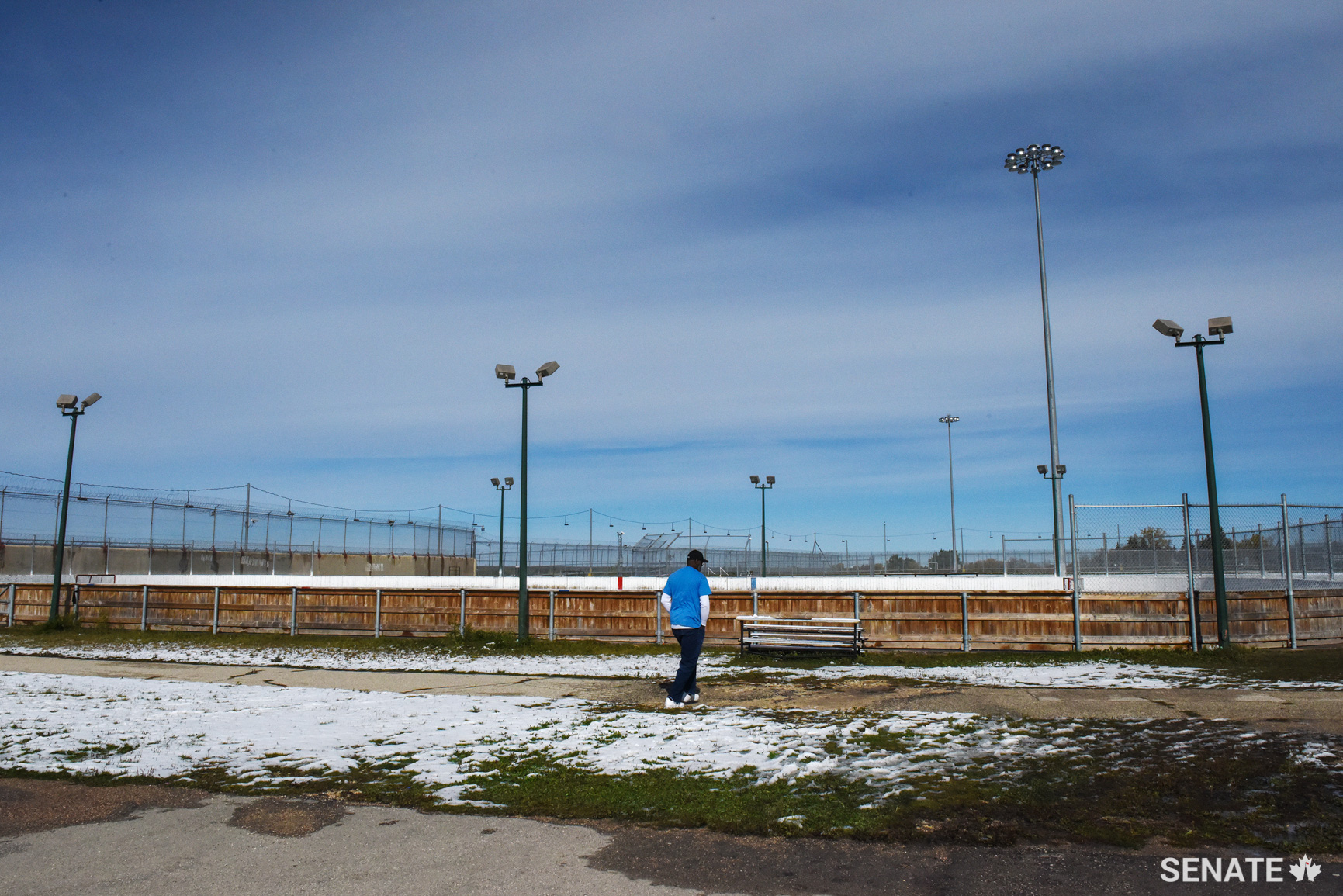 A prisoner walks in an outdoor recreation area used as an ice rink for hockey in winters past.
A prisoner walks in an outdoor recreation area used as an ice rink for hockey in winters past.
Related articles
Tags
Committee news
Photo essay: Inside Canada’s Prairie prisons

Members of the Senate Committee on Human Rights conducted a fact-finding mission to Canada’s Prairie penitentiaries and held a public hearing as part of their study on the human rights of federal prisoners. This photo essay offers a rare glimpse inside Canada’s federal correctional facilities.
Saskatchewan PenitentiaryPrince Albert, Sask.
 A watchtower looms over the perimeter of the Saskatchewan Penitentiary’s maximum security unit.
A watchtower looms over the perimeter of the Saskatchewan Penitentiary’s maximum security unit.
 A correctional worker cleans up flooding caused by a broken sprinkler head in a prisoner’s segregation cell. Prisoners sometimes resort to vandalism to protest conditions that they consider unfair.
A correctional worker cleans up flooding caused by a broken sprinkler head in a prisoner’s segregation cell. Prisoners sometimes resort to vandalism to protest conditions that they consider unfair.
Prince Albert Grand Council Spiritual Healing LodgePrince Albert, Sask.
 Senator Kim Pate looks out onto the grounds of the Prince Albert Grand Council Spiritual Healing Lodge, which includes six cabins, summer and winter sweat lodges, a room dedicated for healing circles, and an administration room. Prisoners at the healing lodge are referred to as “relatives” by staff.
Senator Kim Pate looks out onto the grounds of the Prince Albert Grand Council Spiritual Healing Lodge, which includes six cabins, summer and winter sweat lodges, a room dedicated for healing circles, and an administration room. Prisoners at the healing lodge are referred to as “relatives” by staff.
Okimaw Ohci Healing LodgeMaple Creek, Sask.
 To commemorate their missing and murdered family and friends, women add ribbons with the names of their loved ones to a red dress, displayed here next to a ceremonial jingle dress.
To commemorate their missing and murdered family and friends, women add ribbons with the names of their loved ones to a red dress, displayed here next to a ceremonial jingle dress.
 Senator Jane Cordy, Senator Kim Pate, Senator Wanda Thomas Bernard and Chief Alvin Francis walk past a spiritual lodge at the Okimaw Ohci Healing Lodge. Located on lands belonging to the Nekaneet First Nation, it was designed to house minimum, medium and maximum-security prisoners.
Senator Jane Cordy, Senator Kim Pate, Senator Wanda Thomas Bernard and Chief Alvin Francis walk past a spiritual lodge at the Okimaw Ohci Healing Lodge. Located on lands belonging to the Nekaneet First Nation, it was designed to house minimum, medium and maximum-security prisoners.
Regional Psychiatric CentreSaskatoon, Sask.
 Senators Bernard, Cordy and Pate speak to a prisoner through a window in a segregation cell.
Senators Bernard, Cordy and Pate speak to a prisoner through a window in a segregation cell.
 Layers upon layers of chain-link fence surround an outdoor recreation area at Saskatoon’s Regional Psychiatric Centre, designated both a provincial psychiatric hospital and a federal penitentiary.
Layers upon layers of chain-link fence surround an outdoor recreation area at Saskatoon’s Regional Psychiatric Centre, designated both a provincial psychiatric hospital and a federal penitentiary.
Public Hearings and Town Hall
Ma Mawi Wi Chi Itata Centre
Winnipeg, Man.
 The committee heard testimony from witnesses in three rounds of panels and held a town hall-style meeting during a public hearing at the Ma Mawi Wi Chi Itata Centre event hall in Winnipeg.
The committee heard testimony from witnesses in three rounds of panels and held a town hall-style meeting during a public hearing at the Ma Mawi Wi Chi Itata Centre event hall in Winnipeg.
 Panellist Ryan Beardy and Senator Bernard greet each other before a public hearing. Mr. Beardy was sent to a youth detention centre at age 13 and spent years in and out of the criminal justice system. He is now in his 30s and in his second year at the University of Winnipeg studying political science and conflict resolution.
Panellist Ryan Beardy and Senator Bernard greet each other before a public hearing. Mr. Beardy was sent to a youth detention centre at age 13 and spent years in and out of the criminal justice system. He is now in his 30s and in his second year at the University of Winnipeg studying political science and conflict resolution.
Stony Mountain InstitutionStony Mountain, Man.
 A prisoner on what’s known as the lifer range decorated his Stony Mountain Institution cell to make it feel more like home. “Even a dog gets a bone if he behaves,” he told senators. “I don’t think I’ll ever get out but not through lack of trying.”
A prisoner on what’s known as the lifer range decorated his Stony Mountain Institution cell to make it feel more like home. “Even a dog gets a bone if he behaves,” he told senators. “I don’t think I’ll ever get out but not through lack of trying.”
 Senator Cordy inspects the day’s lunch offering: grilled cheese, salad and pears. Small portion size is a regular complaint at the prison, members of the prisoners’ committee told senators.
Senator Cordy inspects the day’s lunch offering: grilled cheese, salad and pears. Small portion size is a regular complaint at the prison, members of the prisoners’ committee told senators.
 A tap flows into a large soup pot. A prisoner said one of the cooks used to wash his hands under the tap as it poured into the soup.
A tap flows into a large soup pot. A prisoner said one of the cooks used to wash his hands under the tap as it poured into the soup.
 A prisoner browses in the Stony Mountain library.
A prisoner browses in the Stony Mountain library.
 A prisoner extends a mirror beyond his cell bars to see what senators are doing on the range.
A prisoner extends a mirror beyond his cell bars to see what senators are doing on the range.
 Prisoners in the canteen area use a hand scanner to pay for items they wish to purchase.
Prisoners in the canteen area use a hand scanner to pay for items they wish to purchase.
 Prisoners’ paintings surround a sweat lodge in the spiritual grounds at Stony Mountain.
Prisoners’ paintings surround a sweat lodge in the spiritual grounds at Stony Mountain.
 The prison armory includes rifles, shackles, leg irons and handcuffs.
The prison armory includes rifles, shackles, leg irons and handcuffs.
 A prisoner walks in an outdoor recreation area used as an ice rink for hockey in winters past.
A prisoner walks in an outdoor recreation area used as an ice rink for hockey in winters past.


